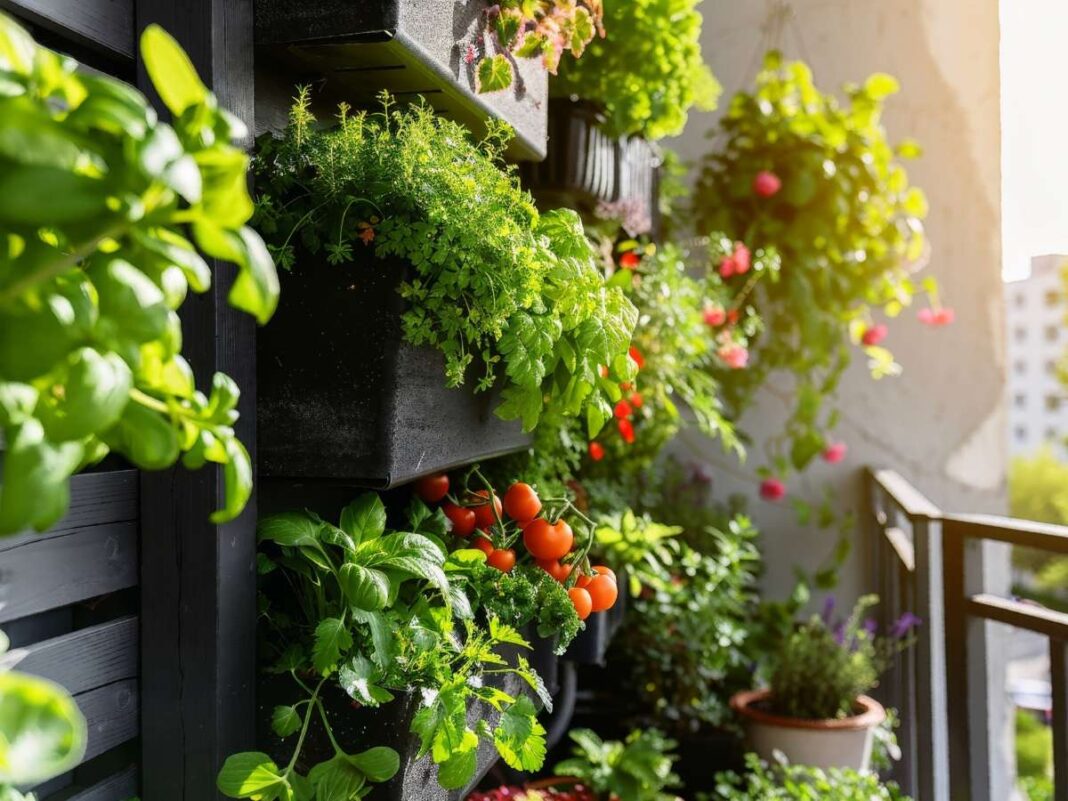In the bustling urban landscapes, finding space for greenery can be a challenge. Yet, amid the concrete jungle, urban dwellers are looking at innovative ideas to design their homes with natural elements. Vertical gardening has emerged as a sustainable and stylish solution, transforming limited spaces into lush, green sanctuaries.
What is Vertical Gardening?
Vertical gardening is a unique way of growing plants upwards on surfaces like walls, fences, or railings instead of spreading out horizontally on the ground. This method allows city residents to maximize limited space, making it perfect for small balconies, patios, and even indoor areas. By cultivating plants vertically, you can turn blank walls into vibrant living art and enjoy the myriad benefits of greenery without needing a traditional garden plot.
Benefits of Vertical Gardening
Space Efficiency
Urban homes often lack expansive outdoor areas. Vertical gardens maximize the use of available space by utilizing vertical surfaces.
Improved Air Quality
Plants in vertical gardens absorb pollutants and produce oxygen, contributing to healthier indoor environments.
Thermal Insulation
A green wall can act as insulation for your home, aiding in temperature regulation and reducing energy costs.
Noise Reduction
Dense foliage can help buffer urban noise, creating a more peaceful living space.
Aesthetic Appeal
Vertical gardens provide a touch of nature and beauty to urban settings, enhancing both indoor and outdoor decor.
Space-Saving Vertical Gardening Ideas
Living Walls
Transform your walls into lush greenery with modular planting systems. These full-scale wall installations not only make a dramatic statement but also turn blank spaces into vibrant ecosystems.
Hanging Pocket Planters
Fabric pocket planters hung on walls or fences are perfect for growing herbs, flowers, and small vegetables. They provide proper drainage and aeration for plant roots and can be easily repositioned as needed.
Upcycled Containers
Get creative and eco-friendly by repurposing items like plastic bottles, mason jars, or old gutters as planters. This not only reduces waste but also adds unique character to your garden.
Trellises and Climbing Frames
Install trellises that provide support to climbing plants such as ivy, jasmine, or even vegetables like beans and peas. This method turns fences and walls into lush, green landscapes and saves space while adding greenery.
Pallet Planters
Repurpose wooden pallets to create rustic and functional vertical planters. They’re perfect for herbs and small vegetables, offering an eco-friendly gardening solution.
Vertical Herb Gardens
Cultivate your favorite herbs in a vertical setup to ensure fresh flavors are always at your fingertips.
Gutter Gardens
Old gutters can be transformed into narrow, wall-mounted planting beds. They’re ideal for shallow-rooted plants and maximize vertical space efficiently.
Hanging Planters
Utilize airspace by suspending planters from ceilings or balcony railings. Hanging planters are perfect for plants with trailing foliage and add layers of greenery without occupying floor space.
Shoe Organizer Planters
An ingenious and budget-friendly method, hanging shoe organizers can be repurposed to grow a variety of plants, offering a space-saving solution for urban gardeners.
Vertical Succulent Gardens
Succulents are low-maintenance and thrive in vertical arrangements. They require minimal water and can enhance any space with their visual appeal.
How to Create Your Vertical Garden
Choose the Right Location
Identify a spot that receives adequate sunlight and meets the specific needs of your chosen plants. Whether it’s a sunny wall or a shaded corner, the location is key to your garden’s success.
Select Suitable Plants
To allow the plants to thrive, make sure you opt for those that are suited for vertical growth. Climbing plants, herbs, succulents, ferns, flowering annuals, and even vegetables are some examples that adjust to vertical setups.
Select Appropriate Containers
From vertical planters and pocket gardens to upcycled items like pallets and gutters, choose containers that fit your aesthetic and space requirements.
Install a Watering System
Consider drip irrigation systems or self-watering planters to ensure consistent hydration for your plants, making maintenance easier.
Regular Maintenance
Keep your garden thriving with regular pruning, feeding, and pest control. Consistent care ensures a healthy and vibrant vertical garden.
Products and Tools to Get You Started
For those looking to purchase plants and supplies, they can choose from a wide variety of options suitable for small-space gardening:
- Climbing Hydrangeas – Perfect for fragrant flowers on vertical structures.
- Boston Ivy – Adds character with its seasonal color shifts and is ideal for covering walls or trellises.
- Succulents – Low-maintenance options for vertical planters.
- Sky Pencil Holly – Great for vertical screening in containers.
Conclusion
Vertical gardening is revolutionizing how urban residents interact with nature. By maximizing space and creativity, anyone can transform their home into a green oasis. Whether you’re an experienced gardener or a novice, these hacks offer endless possibilities to enrich your living space, improve air quality, and add aesthetic value to your home.

